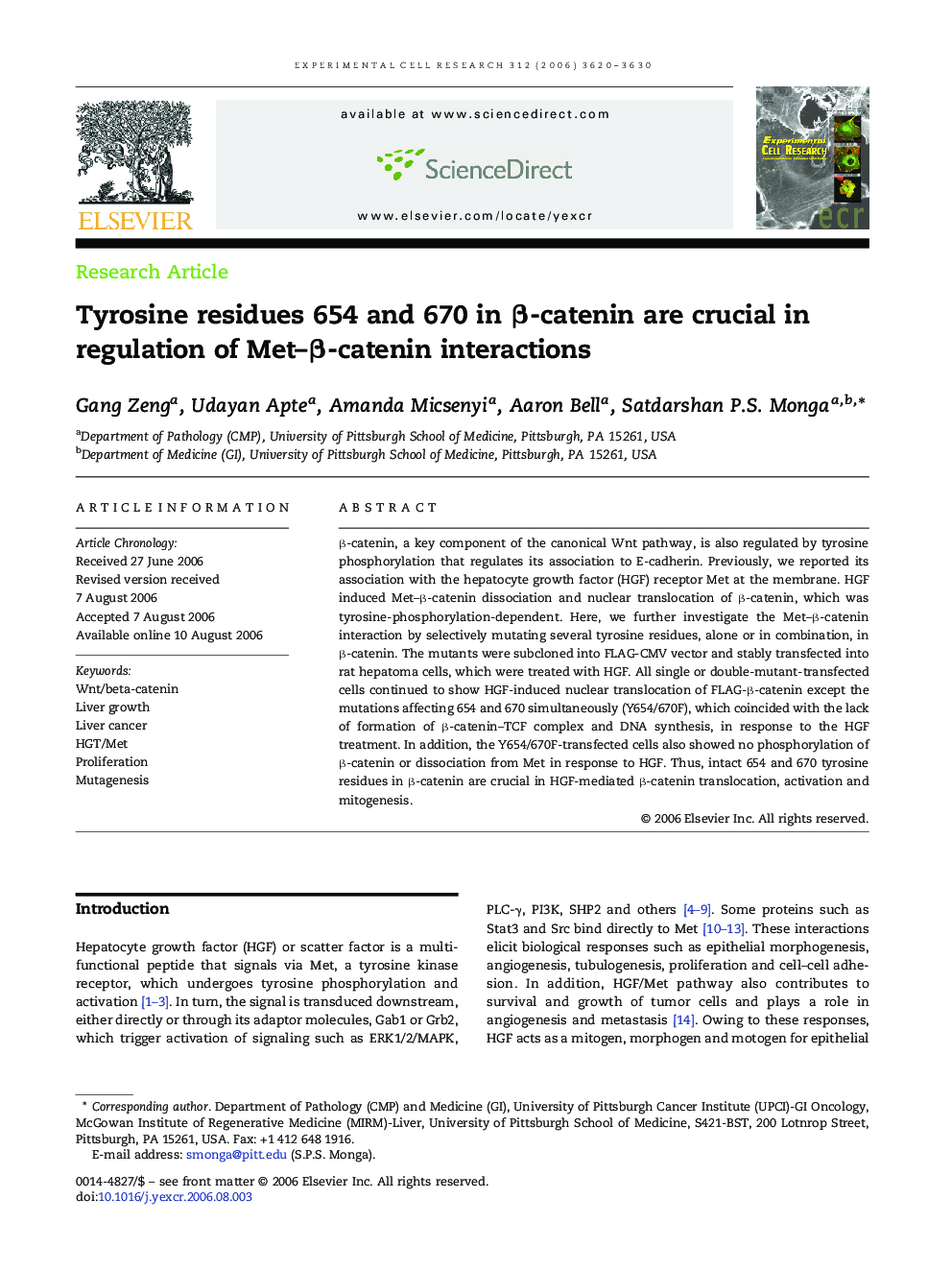| Article ID | Journal | Published Year | Pages | File Type |
|---|---|---|---|---|
| 2133129 | Experimental Cell Research | 2006 | 11 Pages |
β-catenin, a key component of the canonical Wnt pathway, is also regulated by tyrosine phosphorylation that regulates its association to E-cadherin. Previously, we reported its association with the hepatocyte growth factor (HGF) receptor Met at the membrane. HGF induced Met–β-catenin dissociation and nuclear translocation of β-catenin, which was tyrosine-phosphorylation-dependent. Here, we further investigate the Met–β-catenin interaction by selectively mutating several tyrosine residues, alone or in combination, in β-catenin. The mutants were subcloned into FLAG-CMV vector and stably transfected into rat hepatoma cells, which were treated with HGF. All single or double-mutant-transfected cells continued to show HGF-induced nuclear translocation of FLAG-β-catenin except the mutations affecting 654 and 670 simultaneously (Y654/670F), which coincided with the lack of formation of β-catenin–TCF complex and DNA synthesis, in response to the HGF treatment. In addition, the Y654/670F-transfected cells also showed no phosphorylation of β-catenin or dissociation from Met in response to HGF. Thus, intact 654 and 670 tyrosine residues in β-catenin are crucial in HGF-mediated β-catenin translocation, activation and mitogenesis.
